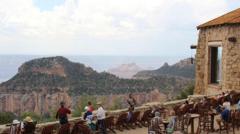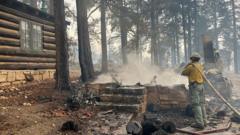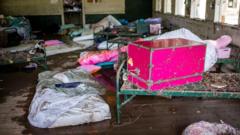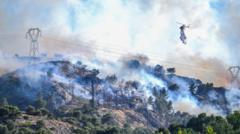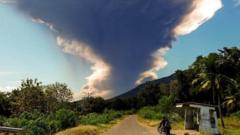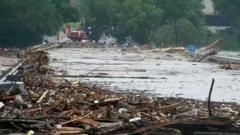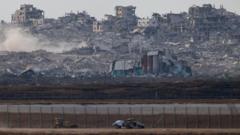As wildfires rage across Manitoba, smoke has drifted into major Canadian cities and parts of the U.S., prompting air quality alerts and health advisories.
Canadian Wildfires Trigger Health Alerts Across North America

Canadian Wildfires Trigger Health Alerts Across North America
Smoke from intense wildfires in Manitoba is impacting air quality in Toronto and parts of the U.S. Midwest, leading to health warnings and hazardous conditions.
As smoke from hundreds of wildfires in Western Canada spreads eastward, air quality has plummeted, prompting health warnings in Toronto and various parts of the U.S. Midwest. Environment Canada issued an air quality alert on Monday for Toronto, which has seen significant haze enveloping the city and affecting visibility. Reports indicate that Toronto's air quality has reached critical levels, being noted as one of the worst globally, according to measurements from IQAir.
The government has warned residents to avoid strenuous outdoor activities as conditions worsen, paralleling similar advisories issued for Saskatoon in Saskatchewan and regions in northern Minnesota, Wisconsin, western New York, and Pennsylvania. Ian Hubbard, a meteorologist at Environment Canada, explained that while wildfire smoke doesn't significantly harm human health until it settles at ground level, the ongoing conditions are concerning.
Despite Canada’s wildfire season not reaching the extremes of last year, when record acres were burned, Manitoba is experiencing its most severe fire season in three decades. Premier Wab Kinew has declared a state of emergency for the second time within a month to aid resource allocation and evacuations, as two fatalities were reported and over 30,000 residents forced to evacuate, many airlifted from remote regions.
The contentious issue of wildfire smoke has reignited tensions between the United States and Canada, particularly as lawmakers in Wisconsin and Minnesota have criticized Canada’s forestry management practices, highlighting frustrations exacerbated by the ongoing trade conflict initiated by previous tariff disputes. Republican Congressman Tom Tiffany is among those vocal about seeking accountability from the Canadian government regarding the management of wildfires, linking the situation to broader environmental and health implications.
With the persistent heatwave in the region, temperatures have soared above 30 degrees Celsius (86 degrees Fahrenheit), compounding the health risks associated with the smoky conditions. As air quality is expected to improve, officials continue to monitor the situation closely amidst rising temperatures and continuing wildfires.
The government has warned residents to avoid strenuous outdoor activities as conditions worsen, paralleling similar advisories issued for Saskatoon in Saskatchewan and regions in northern Minnesota, Wisconsin, western New York, and Pennsylvania. Ian Hubbard, a meteorologist at Environment Canada, explained that while wildfire smoke doesn't significantly harm human health until it settles at ground level, the ongoing conditions are concerning.
Despite Canada’s wildfire season not reaching the extremes of last year, when record acres were burned, Manitoba is experiencing its most severe fire season in three decades. Premier Wab Kinew has declared a state of emergency for the second time within a month to aid resource allocation and evacuations, as two fatalities were reported and over 30,000 residents forced to evacuate, many airlifted from remote regions.
The contentious issue of wildfire smoke has reignited tensions between the United States and Canada, particularly as lawmakers in Wisconsin and Minnesota have criticized Canada’s forestry management practices, highlighting frustrations exacerbated by the ongoing trade conflict initiated by previous tariff disputes. Republican Congressman Tom Tiffany is among those vocal about seeking accountability from the Canadian government regarding the management of wildfires, linking the situation to broader environmental and health implications.
With the persistent heatwave in the region, temperatures have soared above 30 degrees Celsius (86 degrees Fahrenheit), compounding the health risks associated with the smoky conditions. As air quality is expected to improve, officials continue to monitor the situation closely amidst rising temperatures and continuing wildfires.


